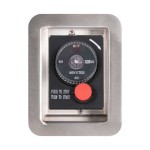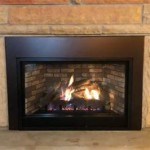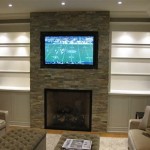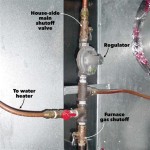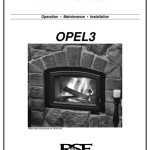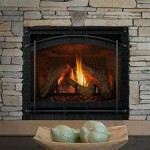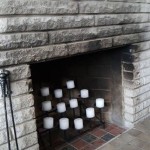Tiled Fireplace Surrounds: A Guide to Design, Materials, and Installation
A fireplace serves as a focal point in many homes, providing both warmth and aesthetic appeal. The fireplace surround, which encompasses the area around the firebox, is crucial for enhancing the fireplace's visual impact and integrating it with the overall room design. Tiled fireplace surrounds offer a versatile and durable option for homeowners seeking to customize this key architectural feature.
This article provides an exposition on tiled fireplace surrounds, covering various aspects including design considerations, material selection, and installation best practices. The content is intended to offer a comprehensive overview for individuals considering a tiled fireplace surround for their home.
Design Considerations for Tiled Fireplace Surrounds
The design of a tiled fireplace surround should complement the architectural style of the home and reflect the homeowner's personal preferences. Key considerations include the size and shape of the fireplace opening, the existing mantel (if any), and the overall aesthetic of the room. The color palette, tile pattern, and grout selection all contribute to the final appearance.
Scale and proportion are essential factors. A small fireplace in a large room might benefit from a larger, more visually impactful surround to create a stronger focal point. Conversely, an overly large surround in a small room can feel overwhelming. Careful measurement and planning are therefore crucial.
Style is another critical aspect. Classic designs often feature neutral colors, symmetrical patterns, and traditional tile shapes like subway tiles or mosaics. Contemporary designs may incorporate bolder colors, geometric patterns, and larger format tiles. Rustic designs might utilize natural stone tiles or textured surfaces to evoke a sense of warmth and authenticity.
The presence or absence of a mantel also influences the design. A mantel provides a natural shelf for displaying decorative items and can serve as a visual anchor for the surround. Tiled surrounds can be designed to seamlessly integrate with a mantel or to stand alone as a distinct architectural feature.
Finally, consider the functionality of the surround. Incorporating a hearth, which is the non-combustible area extending in front of the fireplace, is both a safety requirement and a design opportunity. The hearth can be tiled with the same materials as the surround or with a contrasting material to define the space.
Material Selection for Tiled Fireplace Surrounds
The choice of tile material is a significant factor influencing the appearance, durability, and cost of the fireplace surround. Several types of tiles are suitable for this application, each with its own unique characteristics.
Ceramic tiles are a popular and cost-effective option. They are available in a wide range of colors, sizes, and patterns. Ceramic tiles are relatively easy to clean and maintain, making them a practical choice for high-traffic areas. However, they are less resistant to heat than other materials and may crack or chip if exposed to extreme temperatures.
Porcelain tiles are a more durable and heat-resistant alternative to ceramic tiles. They are denser and less porous, making them more resistant to stains and moisture. Porcelain tiles can also be manufactured to mimic the appearance of natural stone, wood, or other materials. Their increased durability makes them a good choice for surrounds subjected to fluctuating temperatures.
Natural stone tiles, such as granite, marble, travertine, and slate, offer a luxurious and timeless aesthetic. Each type of stone has its own unique veining and texture, adding character and visual interest to the fireplace surround. Natural stone tiles are highly durable and heat-resistant, but they may require more maintenance than ceramic or porcelain tiles. Some types of stone are also susceptible to staining and etching.
Glass tiles offer a sleek and modern look. They are available in a wide range of colors and finishes, including iridescent and frosted options. Glass tiles are non-porous and easy to clean, but they may be more fragile than other materials. They can also be more expensive to install.
When selecting tile material, it is crucial to consider the fireplace's heat output. Direct contact with flames or extreme heat can damage certain types of tiles. Consult with a professional tile installer or fireplace specialist to ensure that the chosen material is suitable for the intended application.
Installation Best Practices for Tiled Fireplace Surrounds
Proper installation is essential for ensuring the longevity and safety of a tiled fireplace surround. A well-installed surround will not only enhance the fireplace's aesthetic appeal but also prevent potential problems such as cracking, crumbling, or water damage.
Surface preparation is a critical first step. The underlying surface must be clean, level, and structurally sound. Any loose or damaged material should be removed and repaired before tiling begins. Some materials, such as drywall or plywood, may require a cement backer board to provide a stable and moisture-resistant base.
Mortar selection is another important consideration. The mortar must be appropriate for the type of tile being used and the conditions to which the surround will be exposed. A high-quality mortar will provide a strong bond between the tile and the substrate, preventing the tiles from shifting or cracking over time.
Tile layout should be carefully planned before installation begins. Dry-fitting the tiles allows the installer to visualize the final appearance and make any necessary adjustments. The layout should be symmetrical and balanced, with consistent grout lines. Any cuts should be made neatly and precisely to ensure a professional finish.
Grouting is the final step in the installation process. The grout fills the spaces between the tiles, preventing water penetration and providing a finished look. The grout color should complement the tile color and enhance the overall design. Excess grout should be carefully removed from the tile surface before it dries.
It's highly recommended that a qualified professional perform the installation of a tiled fireplace surround. Tiling requires skill, experience, and specialized tools. A professional installer can ensure that the surround is installed correctly and in accordance with local building codes. They can also provide valuable advice on material selection, design, and maintenance.

Fireplace Tiles Classique Floors Tile Portland Or

Fireplace Tile Ideas Designs To Inspire You

14 Fresh Designs For Tiled Fireplaces Bob Vila

53 Best Fireplace Tile Ideas And Designs With S For 2024 Mantel Decor Design

Fireplace Tile Ideas Designs To Inspire You

Fireplace Feature Wall Ideas Queen City Stone Tile

Warm Up With Fireplace Tile Ideas Home Remodel Surround
Fireplace Tile Surround 5 Decorative Mantel Tiles 2024

6 Fireplace Design Ideas Tile Warehouse

10 Fireplace Tile Ideas

